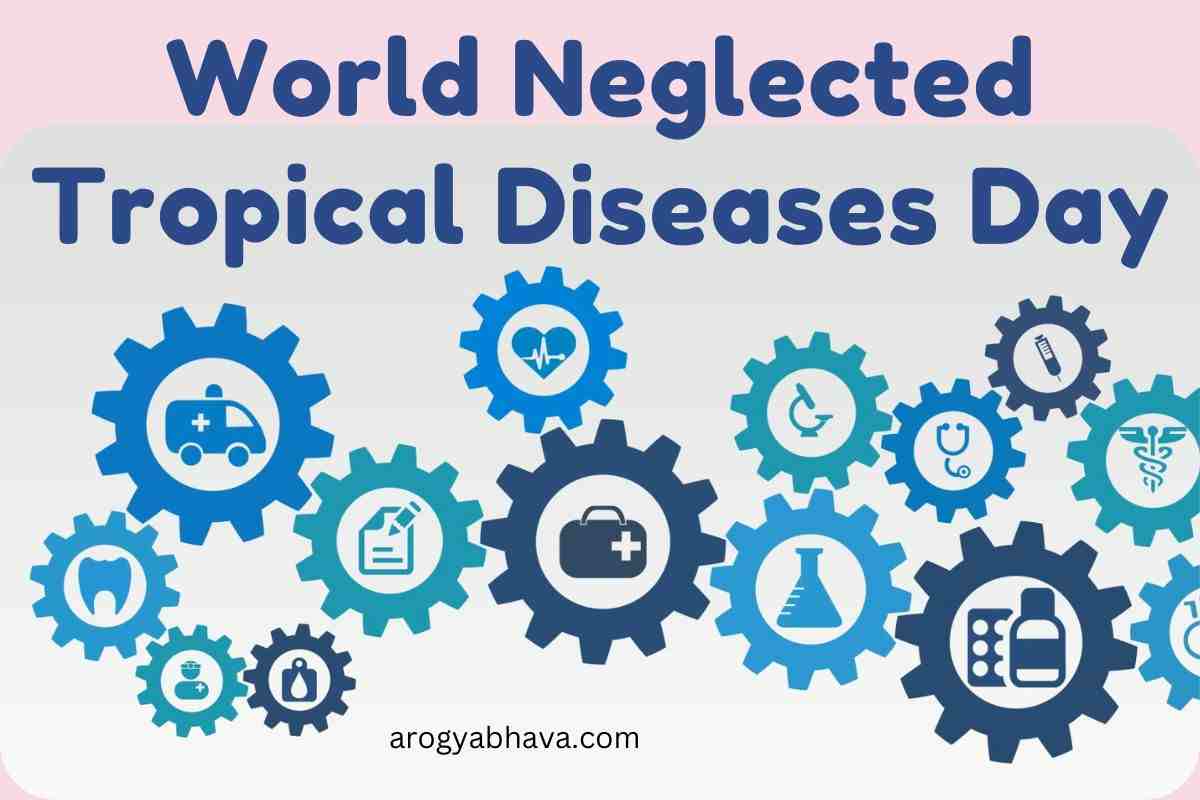World NTD Day: History and Importance Of Neglected Tropical Diseases Day

World NTD Day: World Neglected Tropical Diseases Day, observed annually on January 30, aims to raise awareness of neglected tropical diseases (NTDs) as significant public health problems and bring the world one step closer to their eradication. The theme for 2022 is “Achieving health equality to halt the neglect of poverty-related illnesses.” “We want to end neglected tropical diseases (NTDs),” reads the 2023 catchphrase.
The day was made possible because of the support of the Crown Prince’s Court, and it was a great success as 350 partners banded together to #BeatNTDs and #EndtheNeglect. As a result, world NTD Day will officially be observed in May 2021, as the World Health Assembly decided.
History of the World NTD Day
On January 30, 2020, World NTD Day was the first time. Recognizing the day was recommended by the United Arab Emirates. All delegates agreed that we should accept Neglected Tropical Diseases Day. Therefore, the first World NTD Day was publicly honored in 2020.
The 74th World Health Assembly established January 30 to be World Neglected Tropical Diseases Day, sometimes referred to as “World NTD Day.” In addition, the London Declaration on NTDs and the first NTD road map were both made public at the same time on January 30, 2012. It represents a new beginning for the international network of collaborators and countries where neglected tropical diseases (NTDs) are pervasive.
The U.S. Government was one of the first countries to formally recognize this important awareness day. Hundreds of millions of dollars have traditionally been donated by Americans, making it one of the most active donor nations fighting to eradicate NTDs.
The five most pervasive and troublesome NTDs
- Intestinal worms
- Lymphatic filariasis (elephantiasis)
- Trachoma
- River blindness
- Schistosomiasis
USAID works with countries to help eradicate these diseases. NTDs can make people blind, disabled, or disfigured. Families, communities, and economies suffer when chronic diseases are left untreated. Due to stigma, NTDs can make it more challenging to complete their education, find employment, or even find acceptance from their family and community.
USAID has partnered with more than 30 countries to control and eradicate NTDs. Because of the provision of safe, effective treatments that were kindly provided by pharmaceutical partners, nearly half a billion individuals now reside in areas where they are no longer at risk for these five NTDs.
USAID is strengthening the national governance of NTD programs and assisting in removing obstacles to NTD disease targets by supporting sustainable, country-led NTD response programs and investing in operational research and diagnostics advances.
Globally, NTDs have an impact on more than a billion people. As a result, they may be avoided and treated. However, these illnesses continue to have terrible physical, social, and economic repercussions due to their complex interactions with poverty and ecological systems.
Twenty NTDs have an estimated global prevalence of about 1.7 billion people. At least 11 of these conditions are most common in India. Most people, typically the most vulnerable and disadvantaged, are affected by parasites like kala-azar and lymphatic filariasis.
Initiatives by India to end NTDs
The APELF in 2018 was part of ratcheting up efforts to abolish NTDs. The governments of Bangladesh, India, and Nepal established a regional alliance supported by WHO in 2005 to accelerate the early detection and treatment of people at risk and improve disease surveillance and management of the population with kala-Azar. Trachoma, guinea worm, and yaws are only a few of the NTDs that India previously succeeded in eradicating.
Even though NTDs are defined differently by various organizations, the World Health Organization (WHO) prioritizes twenty NTDs. In addition, the list was expanded in 2017 to include chromoblastomycosis, other deep mycoses, scabies and other ectoparasites, and snakebite envenomation. These diseases are expensive for developing nations, cost billions of dollars annually, and affect more than 1.4 billion people globally (including more than 500 million children). And instead of 204,000 in 1990, they caused 142,000 fatalities in 2013.
Conclusion
More than one billion people are affected by NTDs globally, and a startling number of people are affected by a group of diseases that few people are familiar with. If we want to cease allowing this injustice to persist, we, as the next generation of students, need to be civically active. We must handle the situation of NTDs to enhance the health and economic performance of more than one-seventh of the world’s population. Through education, knowledge, and advocacy of NTDs, we may bring about significant societal change and work to eliminate the neglect of NTDs.
FAQs
What is the primary factor in tropical disease?
Factors like poverty, a lack of access to clean water, and subpar medical care have impacted numerous tropical illnesses.
Why do tropical illnesses spread so quickly?
Tropical diseases can transmit through physical contact, sexual contact, or airborne sources. In addition, many of them disseminate through contaminated food and drink. These intermediary carriers, including insects, are known as vectors because they help spread infectious pathogens.
Are tropical illnesses generally contagious?
“Tropical diseases” refers to all contagious and non-contagious illnesses primarily found in tropical regions. Tropical infectious and parasitic diseases cause over 15 million fatalities yearly.
Read Also: World Health Day & History, Importance, and Theme